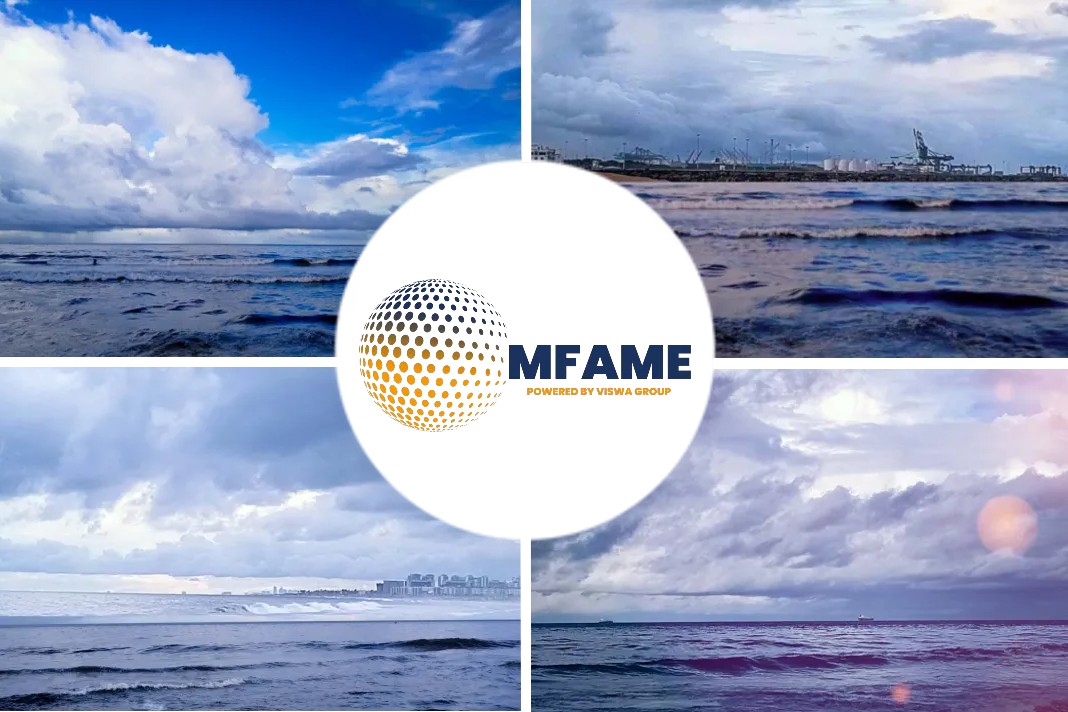 The upcoming meeting of IMO’s Maritime Environmental Protection Committee (MEPC 75) is likely to prove interesting, with the U.S. now joining countries like Denmark in pushing for a complete elimination of GHG emissions from shipping by 2050, and the International Chamber of Shipping looking for market-based measures to finance the massive R&D that will be needed to meet IMO’s goals, says an article published on marinelog website.
The upcoming meeting of IMO’s Maritime Environmental Protection Committee (MEPC 75) is likely to prove interesting, with the U.S. now joining countries like Denmark in pushing for a complete elimination of GHG emissions from shipping by 2050, and the International Chamber of Shipping looking for market-based measures to finance the massive R&D that will be needed to meet IMO’s goals, says an article published on marinelog website.
Journey to zero
Maritime is clearly on a journey to a greener future and the speed is picking up. With those thoughts in mind, let’s look at some recent developments that show how far along the journey to zero we are right now.
Ammonia
Car carrier giant Höegh Autoliners, headquartered in Oslo, Norway, last month announced plans to build a series of ammonia-ready car carriers called the Aurora Class that will not only be the most environmentally friendly ever built, but the largest, with a capacity for 9,100 car equivalent units.
“We are accelerating our decarbonization efforts to meet our net zero emissions target by 2040,” says Höegh Autoliners CEO Andreas Enger. “Together with our customers and trusted partners we will make a significant contribution to a more sustainable maritime industry.”
Multi-Fuel MANK B&W Engine
A MAN Energy Solutions multi-fuel engine that can run on various biofuel and conventional fuels, including LNG, will power the Aurora Class.
Meantime, one of the world’s leading tanker operators, Euronav NV, also has its eyes on ammonia. It has just entered into an agreement with the Hyundai Samho shipyard in South Korea for two VLCC newbuilds plus an option for a third vessel. These ships will be LNG-ready and Euronav says it is working in cooperation with the shipyard and classification society to include an ammonia-ready notation with the potential to reduce CO2 emissions to zero “when technology, logistics and the regulatory framework allows for it.” This, says Euronav, should be defined by the end of the summer.
Electric is the future
Two 67-meter (219.8-feet) RO/RO freight ferries on order for Norwegian grocery distributor ASKO at Cochin Shipyard in India have gotten a lot of attention because eventually it is planned that they will operate autonomously.
Designed for transporting trailers across Oslo Fjord between two of ASKO’s distribution centers, each will have the ability to transport 16 fully loaded standard EU trailers at a time. The operating speed will be 10 knots and it is anticipated that this mode of trailer transport will replace over 2 million road miles per year of truck traffic, in turn saving around 5,000 tonnes of CO2 every year.
The main propulsion system of each vessel consists of one medium-sized Schottel EcoPeller type SRE 210 (500 kW) driven by an electric motor. This motor will be electrically powered by a battery bank of 1,846 kilowatt-hours capacity.
Harbor Tugs
With ports looking to reduce their carbon footprints across their operations, harbor tugs are an obvious target for electric operation.
Crowley Engineering Services has completed the design of the first fully electric U.S. tugboat with autonomous technology. The 82-foot tug will provide 70 short tons of bollard pull, using an azimuthing drive propulsion system with two 1,800 kW motors and a 6 MWh battery.
“Crowley’s design provides operators the tugboat solution to continue serving ships quickly and powerfully, while reducing their environmental impact by eliminating a carbon footprint,” said Ray Martus, vice president, Crowley Engineering Services. “This new design sets the standard for innovation by showing that sustainability and power can work together seamlessly in our maritime industries.”
World’s First Diesel/Battery Push Boats
A new fleet of innovative diesel/battery electric pushboats for Hidrovias do Brasil S.A. is under construction in Belov Engenharia Shipyard, in Salvador, Brazil, to a design from Robert Allan Ltd. of Vancouver, B.C., Canada. The vessels will provide terminal assistance on the Amazon River system, with delivery of the first vessel in 2022.
Built to the RApide 2000-E design, the pushboats are fitted with a DC grid diesel-battery electric propulsion system, two diesel generators, two L-Drives and a large battery bank (600 kWh initial installation, with capability to scale up to 1800 kWh). The pushboat is equipped with two L-Drive units, each with an input power of 350 kW. The propulsion system is diesel-electric to improve efficiency when operating in lower power modes. The vessel is certified as an inland navigating vessel by DNV.
Beyond hybrid
When plugging into shoreside power isn’t an option, how do you power an electric vessel without putting a diesel in the picture? The answer is a fuel cell, which, at its simplest, can be understood as pretty much a way of turning fuel into electricity, with hydrogen, methanol and ammonia being the fuels usually being considered.
In the Netherlands, Rotterdam-headquartered Future Proof Shipping B.V. is currently retrofitting a 361- by 37.6-foot (110- by 11.45-meter) inland container vessel to use a fuel sail 100% on hydrogen power by December of this year.
The fuel cell system will be triple redundant with 825 kW capacity (to supply propulsion and auxiliary power) and a 504 kWh lithium-ion battery pack for peak shaving, secondary and bridging power. The system will contain a 750V DC bus bar and an e-motor for propulsion.
Did you subscribe to our daily newsletter
It’s Free! Click here to subscribe!
Source: marinelog.com















